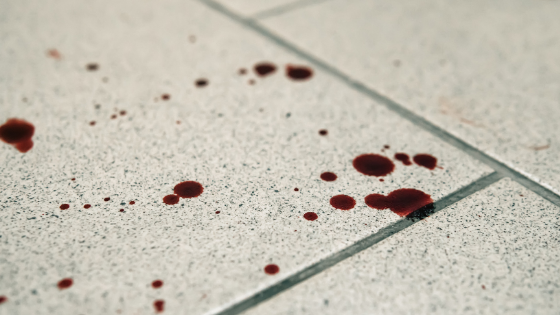For anyone in the healthcare industry, blood is often a fact of the job. It’s also one of the biggest hazards healthcare workers face on a regular basis, since so much can be transmitted through blood.
Even if you’re not a healthcare worker, the last thing you want is someone getting sick from a blood spill. Which means that cleanup is paramount in situations like this. Here, we’re taking a look at blood spills, OSHA guidance, and walking you through what to do in the event of a blood spill.
Equipment to Clean Up Blood Spills
Cleaning up a blood spill involves more than just mopping the area. You have to ensure that cleaners aren’t exposed to bloodborne pathogens, disinfect and decontaminate the area, and safely dispose of the blood and cleaning materials.
To do this, you’ll need some equipment:
- Disposable gloves
- Disposable gown (depending on the severity of the spill)
- Disposable cloth towels
- Biohazard bags
- Biohazard labels
- Disinfectant with a broad spectrum kill claim
- Leak-proof sharps containers
- Brush and dustpan, or tongs and forceps as appropriate
- Disinfecting wipes
Think of disposable gloves and gowns as your PPE in this case. All cleaners should wash their hands and put on disposable cleaning gear before attending the spill.
The Five Steps to Cleaning Up Blood Spills
There are five basic steps to cleaning up blood spills:
- Prevent: The best way to deal with bloodborne pathogen contact is to prevent it from becoming an issue in the first place, which means you need to prevent direct contact. This is why you need disposable gloves, a mask, and a disposable gown.
- Contain and remove: Once the cleanup team is prepared, you’re ready to contain and remove the spill. If there are any broken glass shards or other sharp objects, use tongs to handle them so that you don’t prick your gloves. Store them in leak-proof sharps containers.
- Disinfect: As for the blood, you’ll need to soak it up with a disposable cloth. You need to soak up as much of the blood as you can – your disinfectant won’t work if the area is still covered in wet blood.
- Dispose: All towels used in the disinfecting process should be placed in a biohazard bag and labeled appropriately. Your disposable protective gear (i.e. gloves, gown, and mask) should also go in a biohazard bag. Any reusable products should be soaked in broad-spectrum disinfectant. Contact your local health department for disposal instructions.
- Sanitize: From there, you can sanitize the spill area, but make sure you have proper ventilation in the area before applying cleaning solutions. Apply generously and make sure to let it sit for the recommended cure time. Once the cure time has passed, work from the outside toward the center of the spill area, scrubbing with durable cloth towels.
Dealing with Blood Spills and Other Workplace Incidents
Blood spills OSHA guidelines essentially amount to the same thing: process safety. If you apply good process safety habits, you can prevent many incidents from occurring. And if those incidents do occur, you need strong process safety to ensure no one gets hurt or sick.
If you need more tips to guide your cleanup crew, make sure to check out our blog for more tips, like this post on process safety to mitigate spills.
